The Shelf Styling Trick Designers Use (But Never Talk About)

Have you ever found yourself staring at a bookshelf, frustrated because it never seems to look quite right? No matter how much you rearrange or how many items you add, something about your shelves always feels off. This is a common struggle many of us face when trying to create the perfect shelf display. We see beautifully styled shelves in magazines or on social media, and wonder why our own efforts fall short.
The truth is, the shelf styling trick that designers use to create magazine-worthy shelves is not about simply adding more items or perfectly lining everything up. It’s about mastering the art of strategic grouping and layering to bring balance, texture, and depth. This trick is often kept under wraps, but once you understand it, you’ll be able to transform your own shelves into curated, sophisticated displays. Let’s dive into the shelf styling trick designers swear by and how you can apply it to your own space.
The Secret Shelf Styling Trick Designers Use
When designing beautifully balanced shelves, professional designers rely on a few key principles that most of us overlook. It’s not just about filling every inch of shelf space with items; it’s about thoughtfully arranging objects to create visual intrigue. The shelf styling trick is rooted in the idea of intentional clustering, layering, and using negative space to let each item shine.
1. Grouping Items Together for Balance
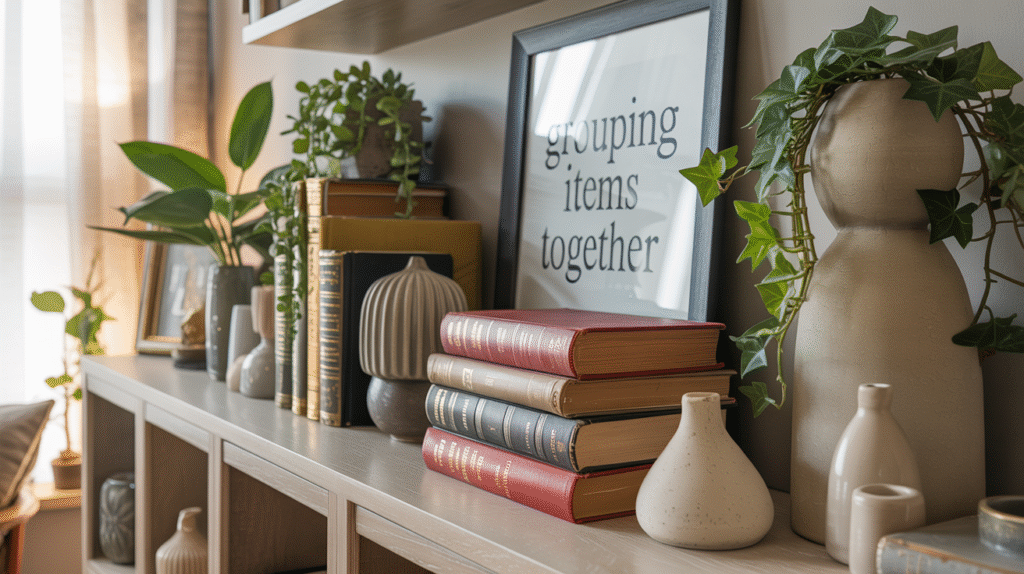
The first secret to mastering the shelf styling trick is grouping objects in clusters. Instead of evenly distributing items across your shelves, designers arrange objects in intentional clusters. For example, instead of lining up books, vases, and decor items, you place them in groups of three or five. This creates visual balance and allows the eye to flow naturally across the display.
By grouping objects based on their size, shape, and texture, you can make your shelves feel more organized and less cluttered. Grouping pottery, books, and small accessories together allows them to stand out as a collective piece, giving your shelves a polished, curated look rather than a chaotic one.
2. Layering Objects to Add Depth
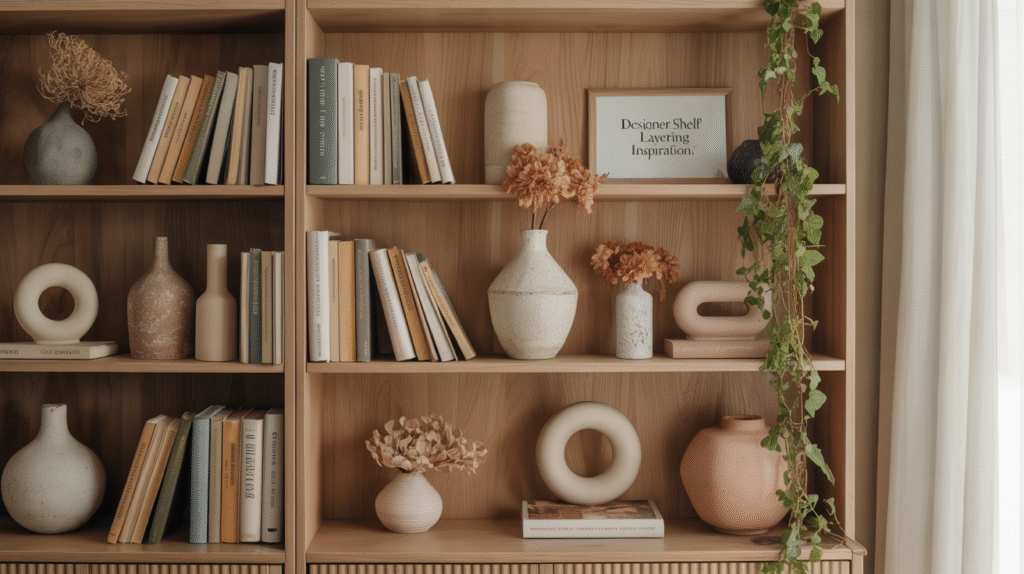
Another essential element of the shelf styling trick is layering. Instead of placing all items on the same plane, layering objects from front to back creates depth and visual interest. Designers often place smaller items in front of larger objects to give the display dimension. For instance, a small plant might sit in front of a larger framed photo, drawing the eye forward while maintaining an open, inviting feel.
Layering creates a sense of space and prevents shelves from feeling flat. When layering, it’s important to vary the heights and sizes of objects, so they complement each other instead of competing for attention.
3. Using Negative Space to Let Shelves Breathe
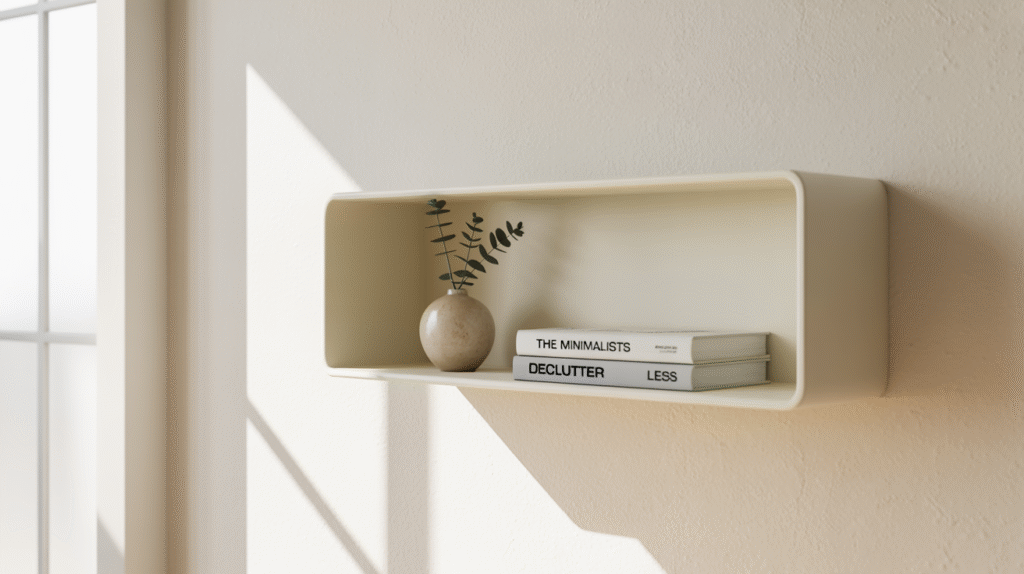
While it may seem counterintuitive, the shelf styling trick also involves leaving negative space. Designers know that shelves need breathing room to feel visually balanced. Filling every shelf to the brim with decor can make the space feel cramped and overwhelming. Instead, allow for open space—at least 25% of your shelf should remain empty.
This negative space not only makes the display feel intentional but also gives each object room to shine. By giving your shelves some breathing room, you can avoid that “cluttered” look and create a more relaxed, inviting atmosphere.
4. The “Backwards Books” Technique
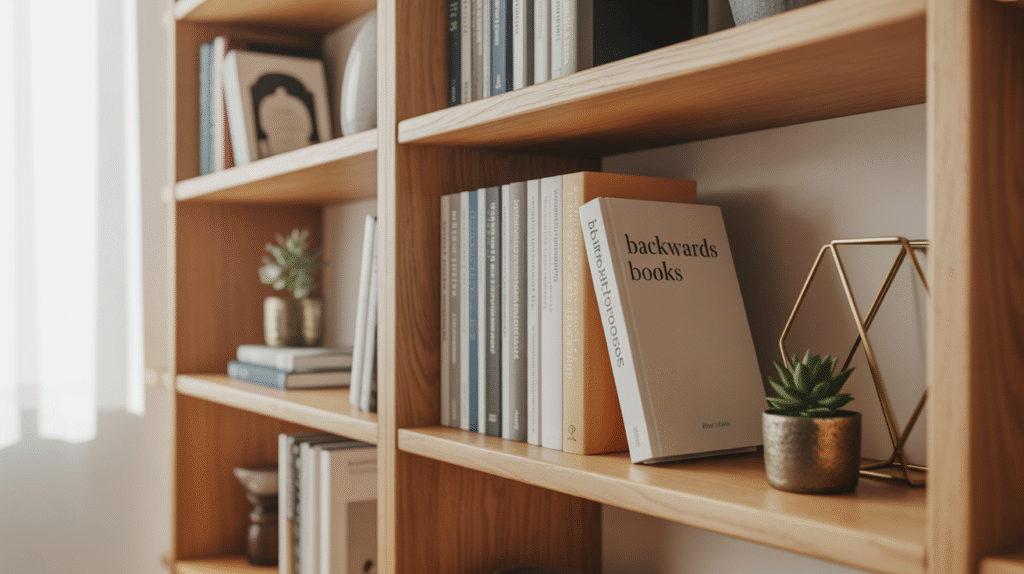
One of the more unconventional tips designers use is the “backwards books” technique. This trick involves turning some books spine-in, allowing the neutral colors of the book covers to create a subtle backdrop for other items. This method prevents books from overwhelming the space and allows other decor elements to take center stage.
This simple adjustment makes your shelves feel more curated and intentional. When used in conjunction with other elements like vases or artwork, the backward books create a quiet contrast that enhances the overall visual appeal of the shelf.
5. Varying Heights and Shapes for Visual Interest
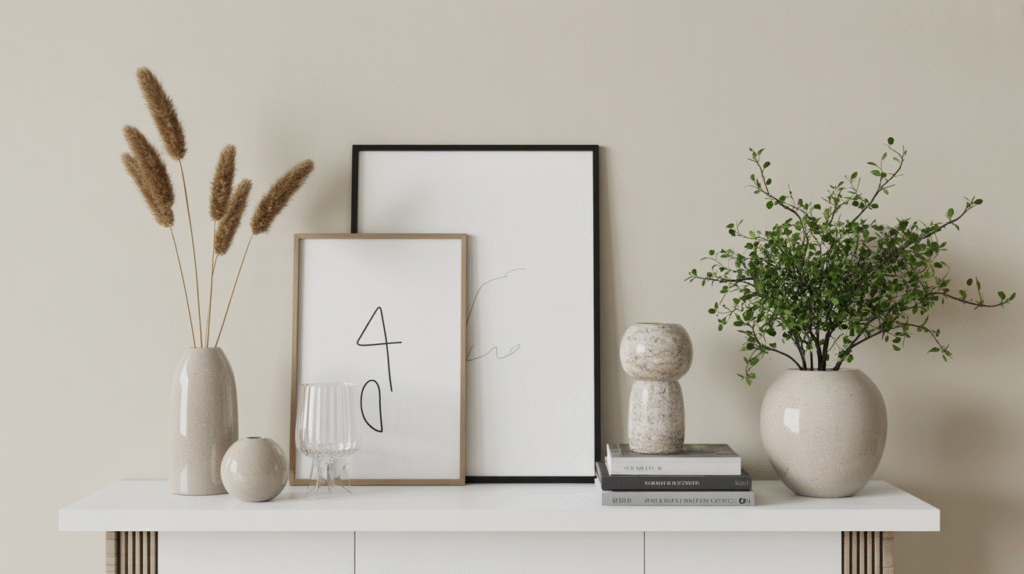
A major component of the shelf styling trick is ensuring that objects vary in height and shape. Designers often combine tall vases with short frames or round baskets with square decorative boxes. These contrasting heights and shapes create a more dynamic and engaging display.
By incorporating a variety of textures, such as ceramics, glass, and wood, you introduce even more visual interest. The interplay between different materials and shapes helps prevent the display from feeling stagnant, which can be a risk when using only one type of object or shape.
6. Embracing Odd-Numbered Groupings
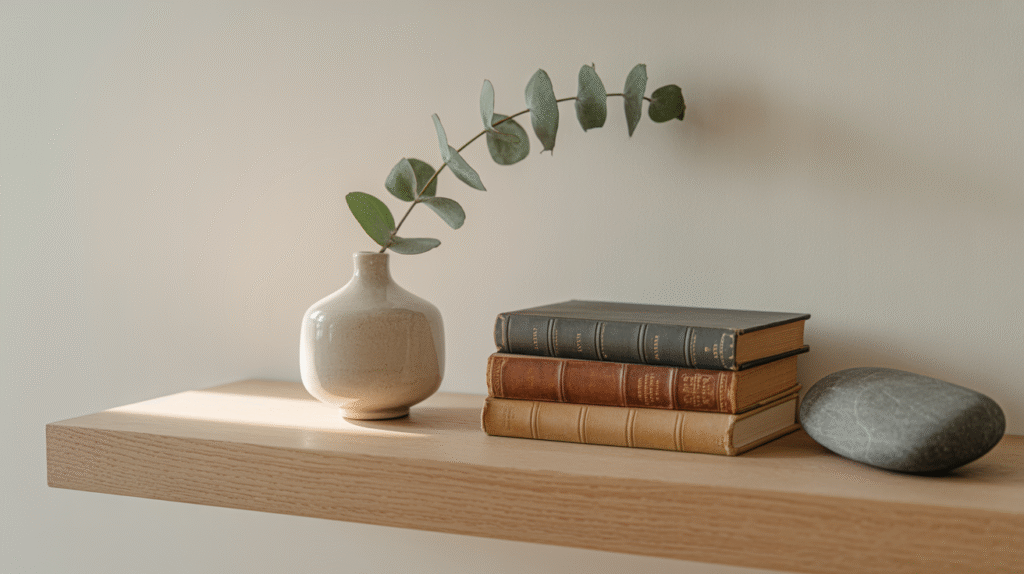
One final tip that professional designers swear by is the power of odd-numbered groupings. Arranging objects in groups of three or five is far more visually appealing than pairs or even numbers. The human eye is naturally drawn to these odd numbers, which create a more organic and dynamic arrangement.
For example, rather than placing two vases symmetrically on your shelf, try arranging three vases in varying heights. This creates a more interesting and visually balanced composition. Odd-number groupings feel more natural and less “staged,” which is key to achieving that designer-worthy look.
7. Integrating Personal Items

While styling your shelves with designer tips in mind is important, don’t forget to include items that reflect your personality. The shelf styling trick isn’t just about creating an aesthetically pleasing display—it’s about telling a story. Personal items like travel souvenirs, family photos, or heirlooms add warmth and character to your shelves.
These meaningful objects help make your shelves feel lived-in and personal, rather than just a display of perfectly arranged decor. Incorporating personal pieces helps balance out the more stylized elements and adds a layer of authenticity to your space.
8. Layering Textures for a Polished Look
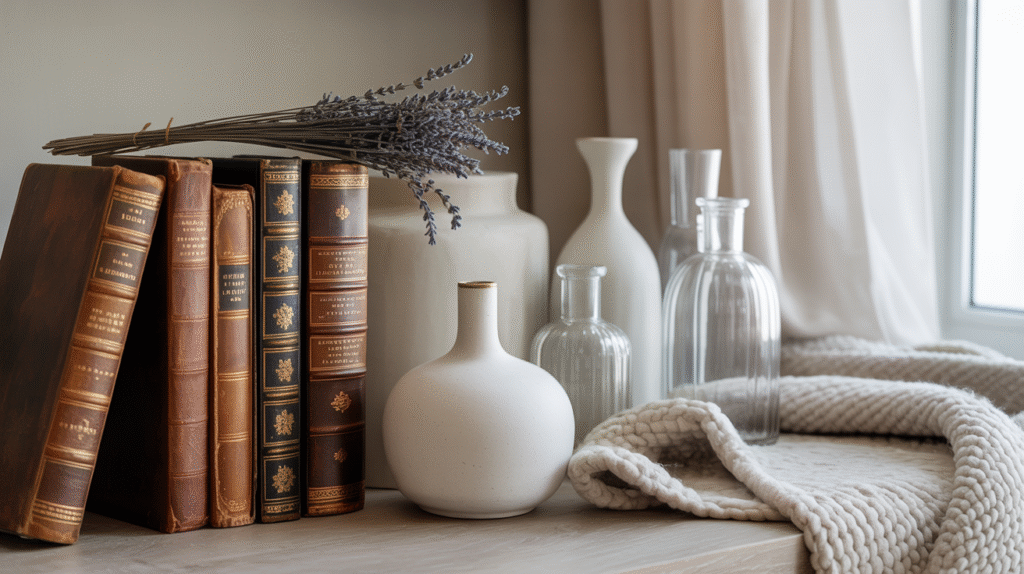
A well-styled shelf is never about just one type of texture. Layering contrasting textures is another key to the shelf styling trick. Think smooth ceramics next to rough baskets, or sleek glass items alongside nubby wool blankets. These contrasting textures add richness to your display, making it feel more complex and interesting.
Incorporating natural materials like wood, rattan, or stone into your shelves can also introduce a touch of warmth and variety. The key is to mix textures in a way that feels cohesive rather than chaotic, enhancing the overall aesthetic of the shelf.
Conclusion
The shelf styling trick is one that designers use to create visually appealing, balanced, and dynamic displays, but it’s a trick that’s rarely discussed publicly. By grouping items in odd numbers, layering objects for depth, and using negative space to let the shelves breathe, you can transform any shelf into a stylish and sophisticated display. Don’t be afraid to mix different textures, heights, and shapes, and always remember to integrate personal items to make the space truly your own. Once you master the shelf styling trick, your shelves will look not just styled but effortlessly curated, just like the ones seen in design magazines.